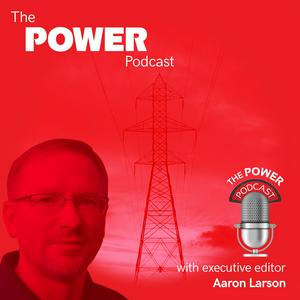189. Optimizing Supply Chain Processes to Ensure a Reliable Electric Power System
The power industry supply chain is facing unprecedented strain as utilities race to upgrade aging infrastructure against a backdrop of lengthening lead times and increasing project complexity. This supply chain gridlock arrives precisely when utilities face mounting pressure to modernize systems. As the industry confronts this growing crisis, innovations in procurement, manufacturing, and strategic planning are essential.
“Utilities can optimize their supply chain for grid modernization projects by taking a collaborative approach between the services themselves and how they can support the projects, as well as having a partner to be able to leverage their sourcing capabilities and have the relationships with the right manufacturers,” Ian Rice, senior director of Programs and Services for Grid Services at Wesco, explained as a guest on The POWER Podcast. “At the end of the day, it’s how can the logistical needs be accounted for and taken care of by the partnered firm to minimize the overall delays that are going to naturally come and mitigate the risks,” he said.
Headquartered in Pittsburgh, Pennsylvania, Wesco is a leading global supply chain solutions provider. Rice explained that through Wesco, utilities gain access to a one-stop solution for program services, project site services, and asset management. The company claims its tailored approach “ensures cost reduction, risk mitigation, and operational efficiencies, allowing utilities to deliver better outcomes for their customers.”
“We take a really comprehensive approach to this,” said Rice. “In the utility market, we believe pricing should be very transparent.” To promote a high level of transparency, Wesco builds out special recovery models for its clients.
“What this looks like is: we take a complete cradle-to-grave approach on the lifecycle of the said project or program, and typically, it could be up to nine figures—very, very large programs,” Rice explained. “It all starts with building that model and understanding the complexity. What are the inputs, what are the outputs, and what constraints are there in the short term as well as the long term? And, really, what’s the goal of that overall program?”
The answers to those questions are accounted for in the construction of the model. “It all starts with demand management, which closely leads to a sourcing and procurement strategy,” Rice said. “From there, we can incorporate inventory control, and set up SOPs [standard operating procedures] of how we want to deal with the contractors and all the other stakeholders within that program or project. And that really ties into what’s going to be the project management approach, as well in setting up all the different processes, or even the returns and reclamation program. We’re really covering everything minute to minute, day to day, the entire duration of that project, and tying that into a singular model.”
But that’s not all. Rice said another thing that sets Wesco apart from others in the market is when it takes this program or project approach, depending on the scale of it, the company remains agnostic when it comes to suppliers. “We’re doing procurement on behalf of our customers,” he said. “So, if they have direct relationships, we can facilitate that. If they’re working with other distributors, we can also manage that. The whole idea here is: what’s in the best interest of the customer to provide the most value.”
